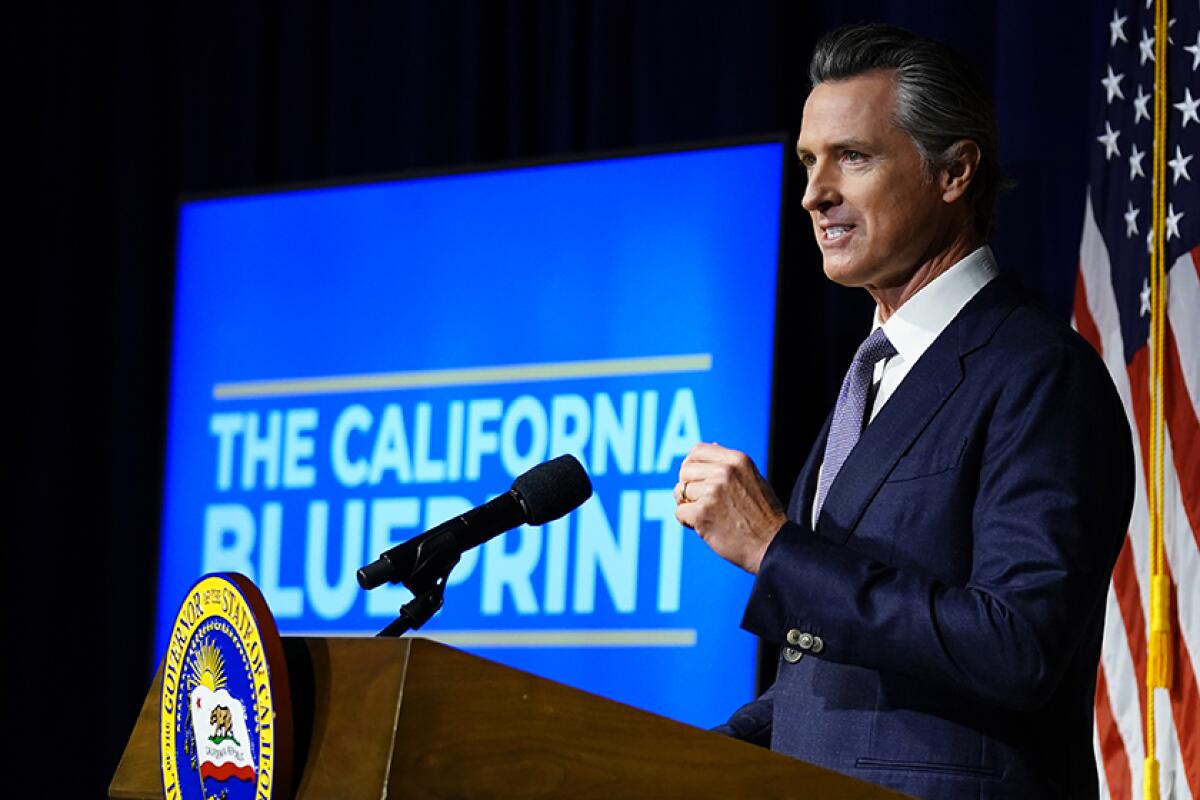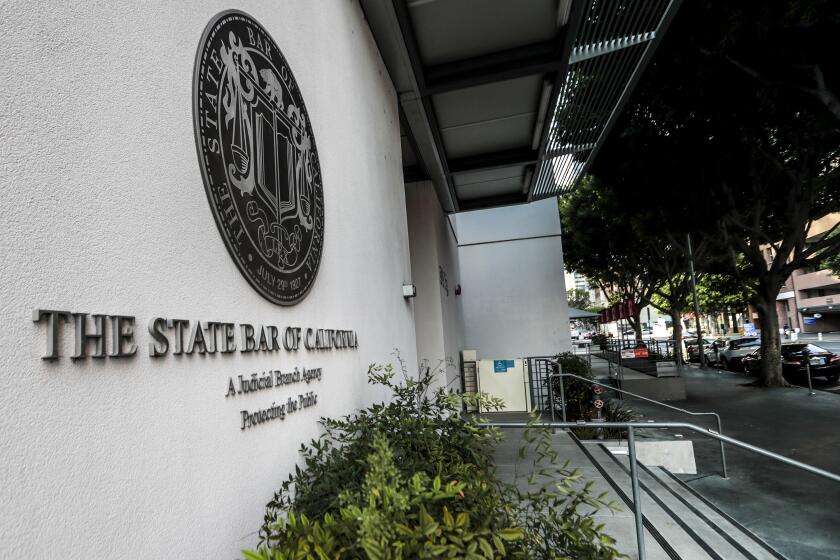California Politics: The state’s budget surplus is distracting

- Share via
SACRAMENTO — No other activity of California’s government stirs together public policy and raw politics in the heaping amounts used to craft the state budget.
A careful look at the spending plan’s ingredients — outlined in January, haggled over through the winter and revised in May and June — offers a pretty good glimpse at the priorities of elected leaders. It also stands as a declaration, of sorts, about the role of government in the lives of Californians.
But from a historical perspective, the California budget process over the last few years has been out of kilter. And much of it comes down to one problem: The mountain of surplus tax revenue is a distraction.
By that, I mean that the glut of cash can obscure some of the larger, perhaps more important long-term trends in how taxpayer dollars are spent.
Let’s set aside the surplus
The surplus also spawns the kind of confusion that allows partisans, liberal and conservative alike, to use snapshots of the budget to their own political advantage.
Democrats can boast of solving all kinds of problems, often neglecting to mention these are short-term fixes. And Republicans decry out-of-control spending, not pointing out that much of it is one-time in nature.
The media aren’t immune to the surplus distraction, either. There’s even been bickering among some in the state Capitol community about whether the word surplus is misleading because it wrongly implies that all of the unexpected cash is up for grabs.
In some ways, it’s not dissimilar from year after year of budget deficits in the early and mid-2000s — a crisis moment that planted the seeds of a government-can’t-get-it-right narrative and resulted in its own set of weird (or maybe just misleading) explanations.
It’s easy to see how it happens.
The numbers beyond the surplus
Take a cursory look at the basic summary charts in Gov. Gavin Newsom’s revised budget and it appears that state general fund spending rose between 2020-21 and 2021-22 by an astounding $85.7 billion — an increase of more than 50% in a single fiscal year.
Well, it did. But some context is in order.
A less publicized budget chart notes the current year’s general fund spending includes $54.7 billion in one-time expenditures, items paid for with surplus cash. An additional $83.6 billion would be set aside for mandatory spending on public schools. Those expenditures, combined, account for about 56% of general fund spending in the fiscal year that ends June 30.
But they also don’t reflect the kinds of spending decisions for which lawmakers are often criticized, the ones on programs that expand and grow over time.
The surplus and school dollars account for 46% of all general fund spending proposed by Newsom in the budget year that begins July 1. And in the budget year after that — which is only an idea at this point and not on the agenda of lawmakers — the governor proposes the surplus and schools, combined, would account for almost 44% of all general fund spending.
(And just to make it more confusing: the school spending totals are themselves larger than expected because they include a portion of surplus tax revenues that, by law, must be spent on education.)
Enjoying this newsletter? Consider subscribing to the Los Angeles Times
Your support helps us deliver the news that matters most. Become a subscriber.
The inflation fight that’s brewing
None of that is to say that the governor and Democratic lawmakers aren’t raising long-term spending on what would be considered discretionary government programs, just not to the extent some might think when they read the headlines. Proposals in the latest budget plan would raise spending on higher education and healthcare services for low-income Californians, for example.
But Keely Martin Bosler, the governor’s budget director, said it’s important to note that future discretionary spending projections have been made with inflation pressures in mind. That “buffer,” as she called it in a phone interview this week, runs in the billions of dollars in the latest budget proposal — a higher cost for basically the same services, something most Californians are feeling in their own budgets.
Bosler’s point was that the governor believes that inflation pressures aren’t soon going away and the state shouldn’t commit all of those dollars to expanding programs. It’s an important topic to watch as final budget talks begin with legislators — given that some of them may believe it’s OK to shrink the inflation buffer in order to leave more money for helping more of the state’s residents.
And then there’s the spending limit
The long-term growth in some programs has been at the heart of a different discussion this year, one that centers on whether the California Constitution’s spending limit might soon force cuts to vital programs.
Newsom’s latest budget proposal largely calls the spending limit a non-issue for the time being — a sharp change from his January plan, which predicted the state would breach the cap on appropriations. Now, the governor believes there’s about $2 billion in breathing room, thanks to diverting billions in spending into categories that are excluded from calculating the cap.
That’s probably a short-lived victory. The independent Legislative Analyst’s Office noted this week that the spending limit could force lawmakers next year to cut some $3.4 billion in spending, or divert it into excluded programs.
California politics lightning round
— Facing fierce opposition from California’s powerful oil industry and trade unions, legislation to close down operations on three offshore oil rigs off the Orange County coast failed Thursday to win passage in a state Senate committee.
— Two bills inspired by the fatal accident on the set of the movie “Rust,” both seeking industry changes, were also held in the Senate Appropriations Committee and won’t move forward in 2022.
— Newsom’s new budget provides few details on how he plans to fund a sweeping proposal to use the courts to order treatment for homeless individuals with severe mental illness and addiction.
— It will probably take persistence and a lot of political good fortune for Sacramento County Dist. Atty. Anne Marie Schubert to succeed in the race for California attorney general as an unaffiliated, independent candidate.
— Nor will it be easy for state Sen. Brian Dahle, a conservative legislator from Lassen County, in the race for governor as he faces an unfriendly political climate in a state where the GOP spent years slowly withering into irrelevance.
Stay in touch
Did someone forward you this? Sign up here to get California Politics in your inbox.
Until next time, send your comments, suggestions and news tips to [email protected].
Sign up for Essential California
The most important California stories and recommendations in your inbox every morning.
You may occasionally receive promotional content from the Los Angeles Times.




